Phase cancellation is a tricky problem in music production that can mess up your sound if it’s not dealt with properly.
It can make your music sound less clear, weak, and sometimes parts of your audio might even disappear completely.
So, if you’re making music, it’s really important to learn how to spot phase cancellation and know what to do to fix it.
Getting your mix right means making sure your music sounds great, balanced, and full of life, which can be done by destroying phase cancellation in its steps.
That’s why, today’s article, we’ll break down:
- What is phase cancellation ✓
- What sound waves and phase are ✓
- How to find phase problems in your mix ✓
- Where to put mics to avoid phase issues (microphone placement) ✓
- How phase cancellation changes different sounds ✓
- The basics of stereo recording and phase ✓
- Expert tips to avoid/fix phase cancellation ✓
- Much more about how to prevent phase cancellation ✓
You’ll know all about phase (and not the good kind) so you can spot it when it’s causing problems and fix it like a pro if it’s happening.
You’ll learn the best places to put your mics, how to make sure your stereo recordings sound good, and even some advanced tricks.
It will help keep your mixes sounding clear and powerful.
So, let’s dive in…
Table of Contents
- What is Phase Cancellation & How Does it Occur?
- Understanding Sound Waves and Phase
- Identifying Phase Issues in Your Mix
- Mic Placement Techniques to Avoid Phase Problems
- The Impact of Phase Cancellation on Different Frequencies (low, mid, high)
- Steps to Fix Phase Cancellation
- Adjusting Mic Placement (Microphone Placement)
- What is Phase Cancellation: Final Thoughts
What is Phase Cancellation & How Does it Occur?
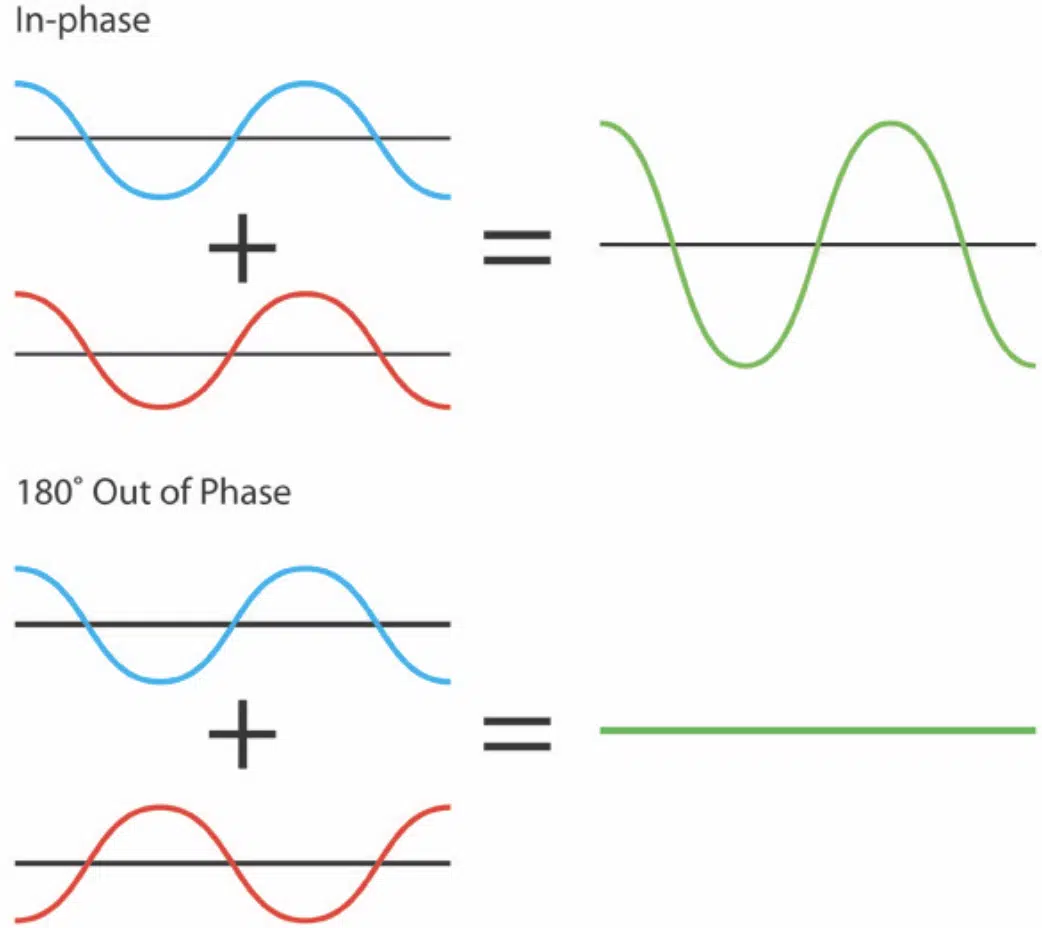
Phase cancellation is a phenomenon that occurs when two or more sound waves of the same frequency come into contact with each other in a way that causes them to be out of phase.
This means that the peaks and troughs of the sound waves do not align perfectly.
When this misalignment happens, the sound waves can completely cancel each other out, leading to:
- A reduction in volume
- In some cases, complete silence
This is especially common in the recording and mixing stages of music production, where multiple sound sources and microphones contribute to the complexity of the sound waves.
The occurrence of phase cancellation is not just a technical glitch 一 it’s a determining factor that can significantly affect the quality of audio in music production.
It can happen in various situations, such as when using two microphones to capture a single sound source or during the mixing process when combining tracks.
Understanding how and why phase cancellation occurs is essential for audio engineers and music producers aiming to achieve the best sound possible.
Understanding Sound Waves and Phase

Sound waves are vibrations that travel through the air, and their characteristics can be described in terms of frequency, amplitude, and phase.
Phase refers to the position of a point in time on a waveform cycle.
It’s crucial in music production because when two sound waves of the same frequency are in phase, they reinforce each other.
This leads to a louder overall sound.
Conversely, when they are out of phase, they can completely cancel each other out 一 resulting in phase cancellation.
The concept of phase is fundamental in understanding how sound waves interact with each other because, when recording or mixing audio, it’s common to work with sound waves from different sources or microphones.
If these sound waves are not properly aligned in phase, it can lead to phase issues, affecting your audio in:
- Clarity
- Depth
- Power
Recognizing the role of phase in sound wave interactions is the first step in addressing phase cancellation in music production, sound design, audio engineering.
As well as the recording process, naturally.
And, if you’re going to really make an impact, your sound has got to be pristine.
Pro Tip
When two waves or two waveforms are combined, the resulting sound is typically shaped by how these waveforms interact with each other. Understanding this interaction is crucial because waveforms that align perfectly can amplify the sound, while misaligned waveforms can lead to phase cancellation, significantly messing with the audio’s quality. It’s all about those waveforms.
Identifying Phase Issues in Your Mix
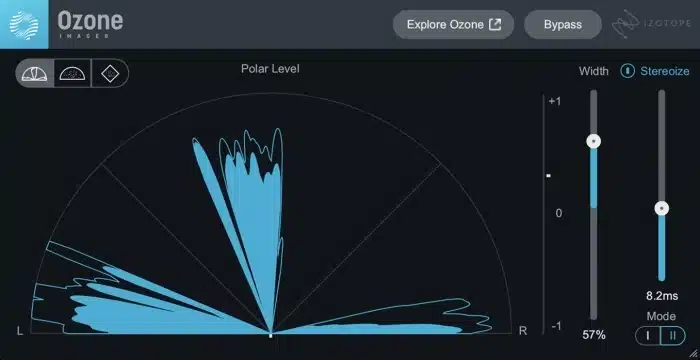
Identifying phase issues in your mix is crucial for achieving a clean and powerful sound.
#1. One common sign of phase problems is a noticeable thinness or lack of punch in your bass frequencies.
This can make your kick drum sound weak or your bass guitar less impactful.
#2. Another telltale sign is when certain instruments or parts of a track seem to lose clarity or volume when combined with the rest of your mix.
This can happen, for example, when recording a drum kit with multiple microphones…
If the mics are not placed carefully, the sound waves they capture from the drum skins can interfere with each other 一 leading to phase cancellation.
To effectively spot these phase issues, you can use a visual instrument such as phase meters, which can help identify when two tracks are out of phase.
#3. Listening in mono is another powerful music production technique.
It may sound simple, but it can make phase problems more apparent, as it forces all the sound to come through one channel (not two channels).
It highlights any discrepancies in phase alignment.
For instance, if you’ve recorded an acoustic guitar with two mics, one aimed at the neck and the other at the body, and you notice a drop in sound quality when listening in mono, it’s likely a phase issue.
By paying close attention to these signs and using the right music production software (even a free plugin), you can detect and address phase problems early in the mixing process.
This will ensure your mix maintains its intended depth and energy, which is key to help avoid phase cancellation.
Mic Placement Techniques to Avoid Phase Problems
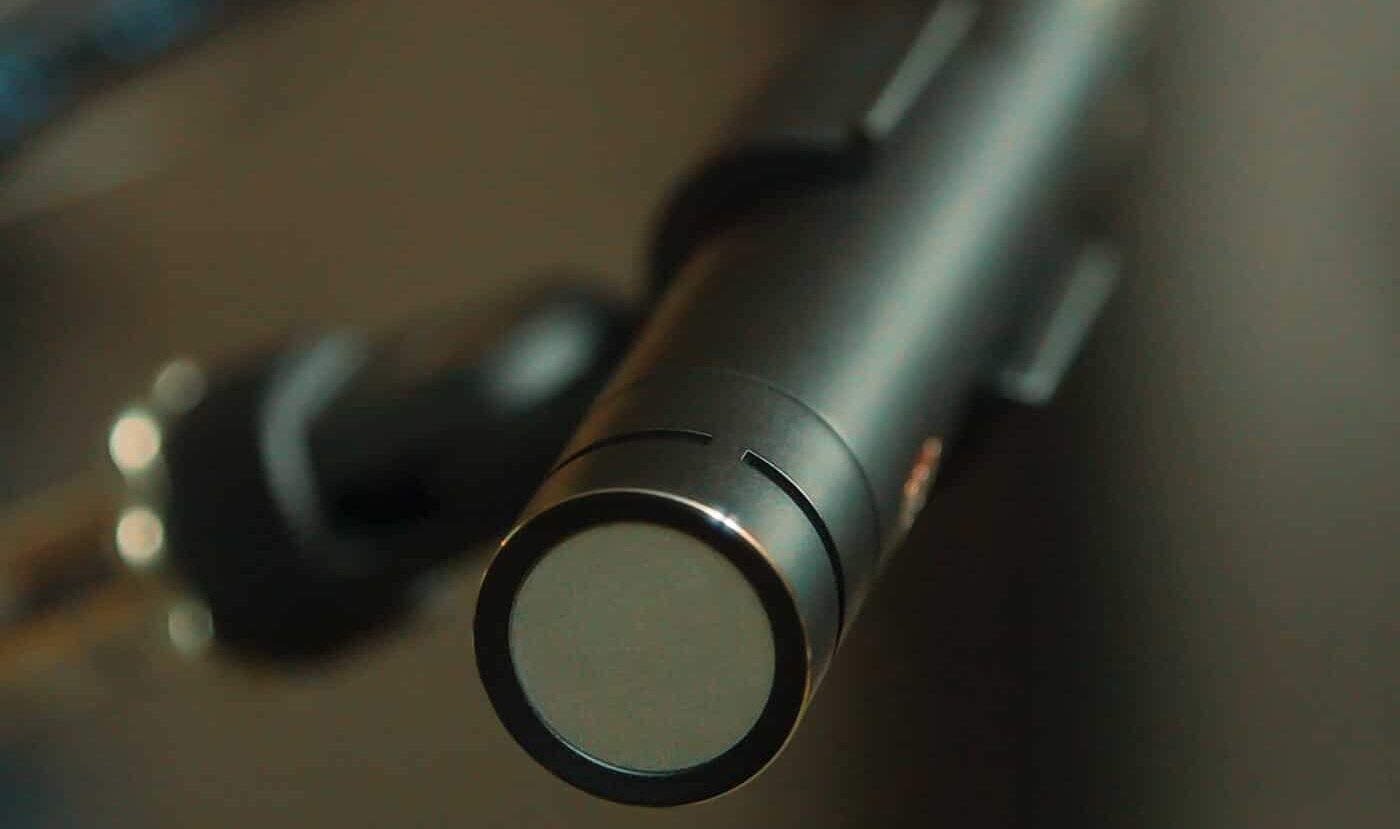
When recording with two microphones, oftentimes phase cancellation occurs and becomes a significant concern.
This is particularly true when capturing a single sound source, such as an acoustic guitar or a drum kit.
If the microphones are placed at different distances from the sound source, the sound waves they capture can arrive at the microphones at slightly different times (not the exact same time).
This leads to, you guessed it, phase cancellation.
A. To avoid phase problems when using multiple mics, one effective technique is the “3-to-1 rule.”
This 3-to-1 rule suggests that the distance between the microphones should be at least three times the distance from each microphone to the sound source.
The 3-to-1 rule helps minimize phase cancellation by ensuring that the sound waves captured by each microphone are more likely to be in phase.
B. Another crucial mic placement technique is to ensure that microphones are positioned to capture the sound waves from the sound source at similar:
- Angles
- Distances
- Heights
This can help maintain phase coherence between the microphones and reduce the risk of phase cancellation altogether.
By carefully considering mic placement and following these techniques, you can significantly reduce phase issues in your recordings/recorded audio.
The Impact of Phase Cancellation on Different Frequencies (low, mid, high)
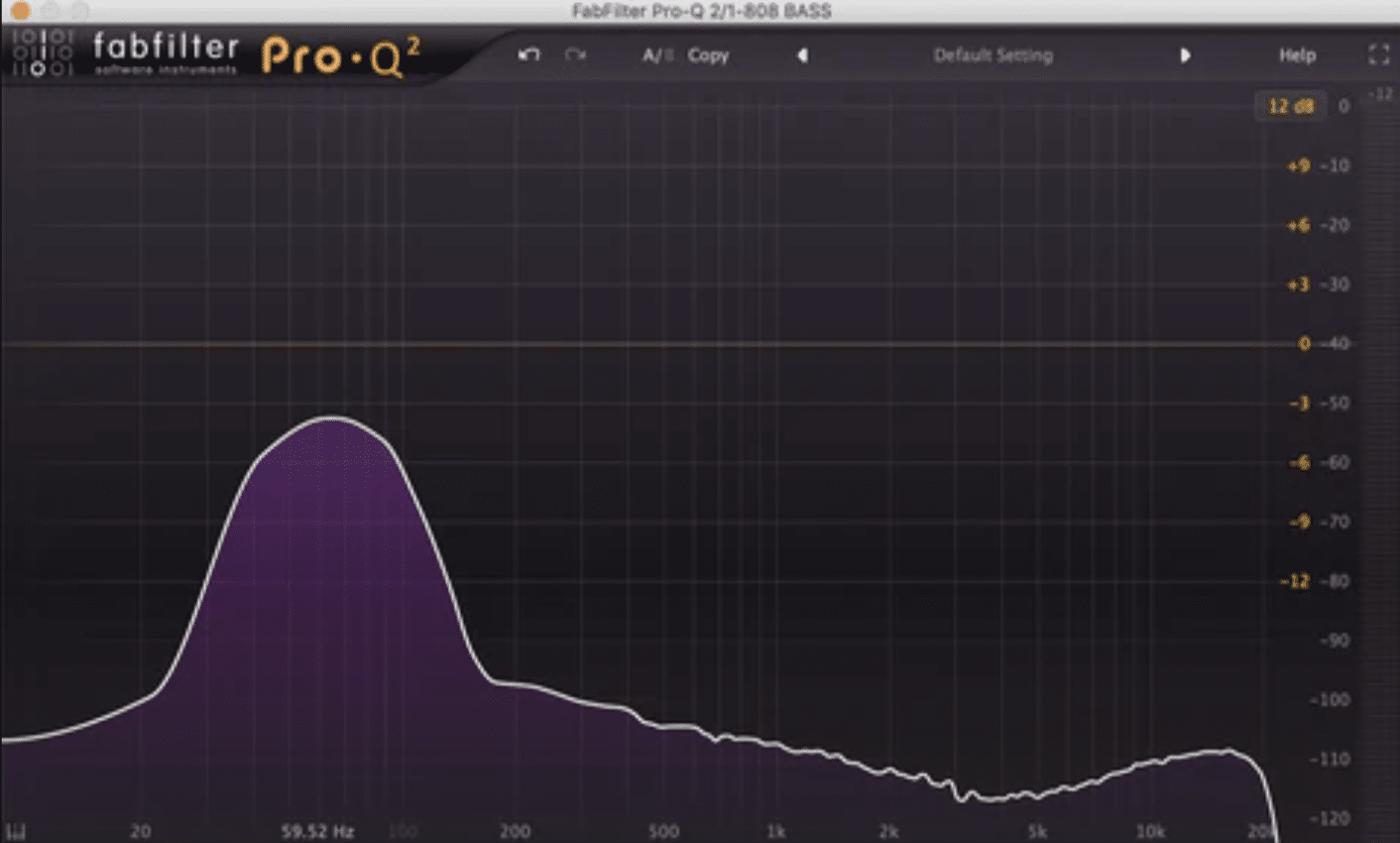
Phase cancellation can affect different frequencies in various ways, impacting the overall sound quality of a mix.
Low frequencies, such as bass and kick drum sounds, are particularly susceptible to phase cancellation.
This is because low-frequency waves are longer, and when two sources are slightly out of phase, it can lead to a noticeable loss of power and depth in the bass frequencies.
Mid and high frequencies can also be affected by phase cancellation 一 leading to comb filtering, which occurs when two sound waves of slightly different frequencies interfere with each other.
It creates a series of peaks and troughs in the frequency response.
Comb filtering can cause certain frequencies to be exaggerated while others are diminished, resulting in a hollow/metallic sound.
NOTE: Comb filtering is very delicate, so if you’d like to learn all about it, check out our comb filtering article.
-
Pro Tip: Stereo Miking Technique
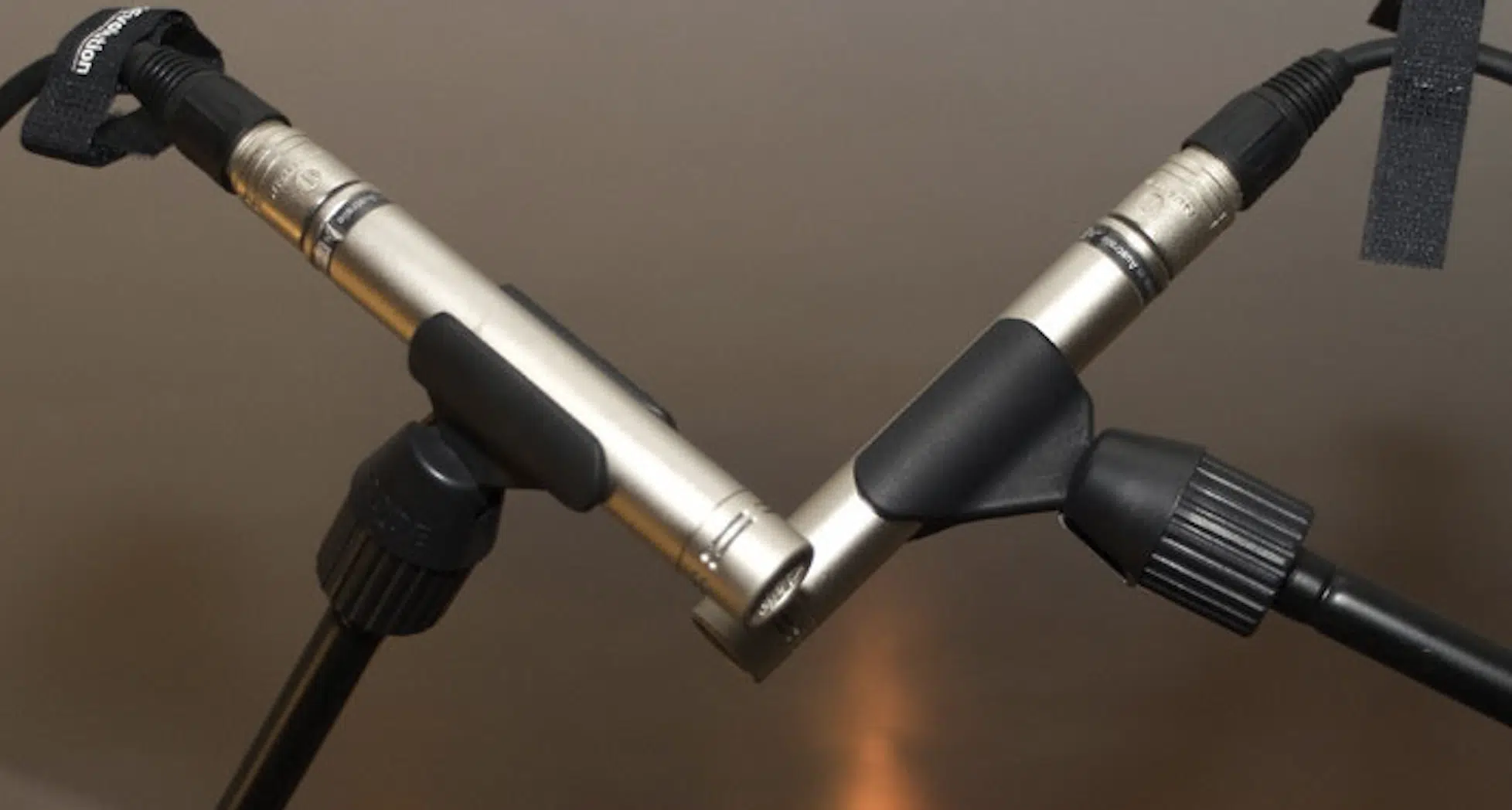
One effective technique to avoid phase cancellation in stereo recording is using coincident or near-coincident microphone pairs.
Coincident pairs, such as X/Y configurations, position two microphones so that their capsules occupy almost the same space, but are angled differently.
This arrangement minimizes the time delay/difference between two sounds reaching each microphone, thus reducing phase cancellation risk.
Near-coincident setups, like ORTF, space the microphones a small distance apart.
It’s meant to emulate human ear spacing to capture a natural stereo image with minimal phase issues (pretty cool, actually).
-
Managing Left and Right Channels to Prevent Issues
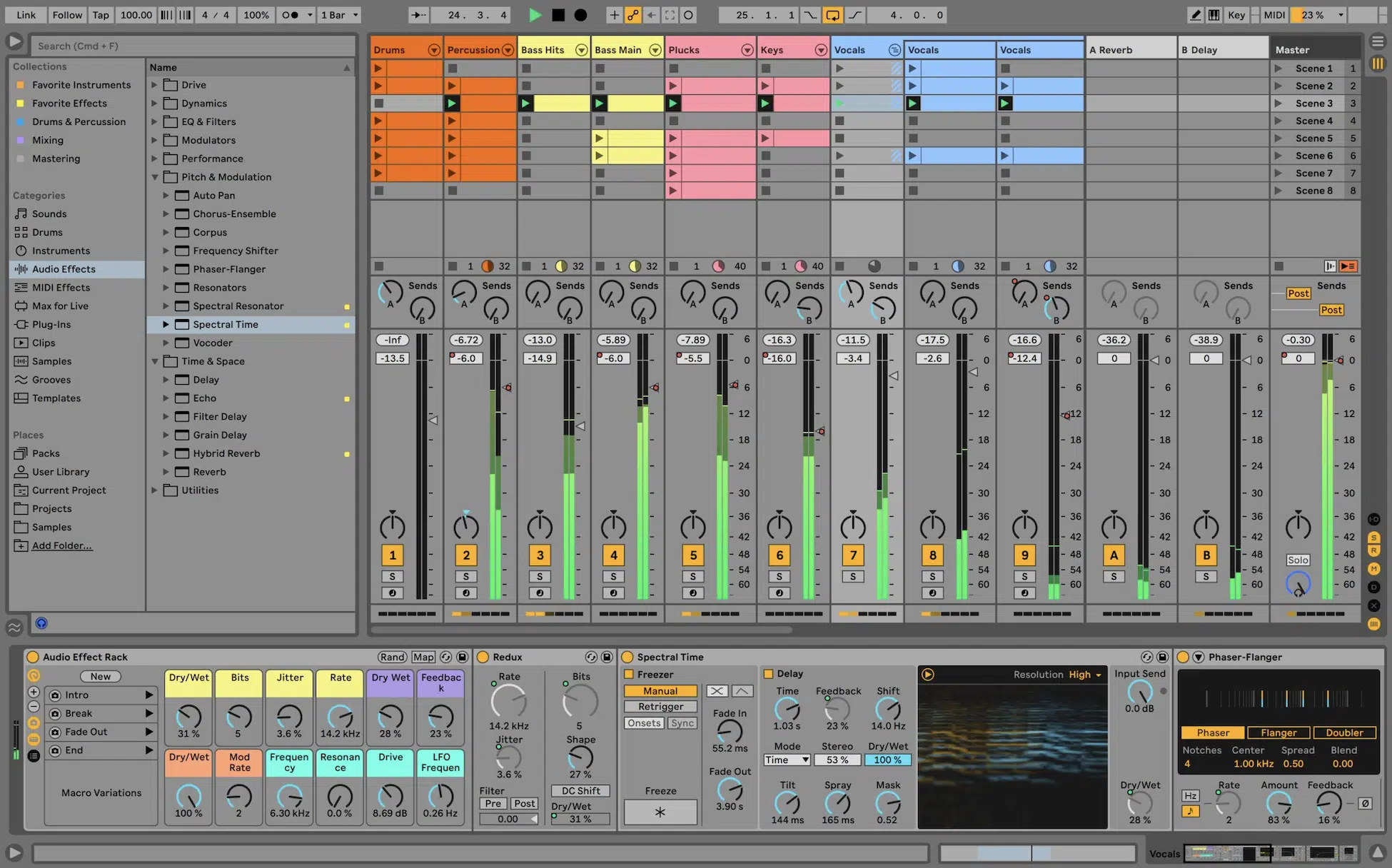
Maintaining a coherent phase relationship between the left and right channels is crucial in stereo recording.
Make sure that sound sources are captured in a way that maintains phase coherence across the stereo field.
This involves careful consideration of the microphones’ positions relative to each other and the sound source, as well as the acoustic environment.
Mixing techniques can also help manage phase issues between the left and right channels.
NOTE: Tools like mid-side (M/S) processing allow for separate manipulation of the mid (mono) and side (stereo) components.
They provide more control over the phase relationship and stereo image.
Steps to Fix Phase Cancellation
Addressing phase cancellation requires both preventive measures during recording and corrective actions during mixing. Going from identifying to fixing phase issues involves a combo of technical knowledge and creative techniques. This way you can truly answer the question “what is phase cancellation,” as you’ll be stopping it in its tracks.
-
Phase Invert Function
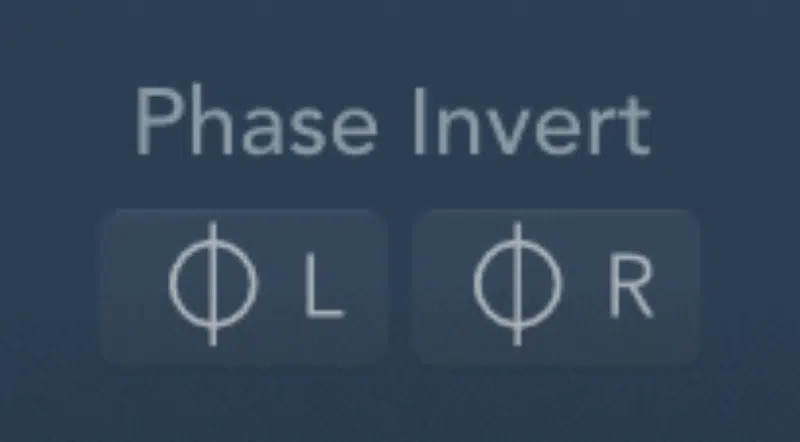
One immediate step to fix phase cancellation is using the phase invert function available on most:
This function flips the phase of a signal by 180 degrees, which can sometimes bring it into phase with another signal that it was previously cancelling out; signal madness.
By carefully listening, analyzing, and experimenting with phase inversion, you can often correct phase issues between tracks.
This is especially true when dealing with recordings from multiple microphones.
Phase inversion is particularly useful when working with drum recordings or any situation where multiple mics capture a single sound source.
Flipping the phase of one mic can often instantly improve the fullness and clarity of the sound by aligning the phase of the combined signals more coherently.
Adjusting Mic Placement (Microphone Placement)
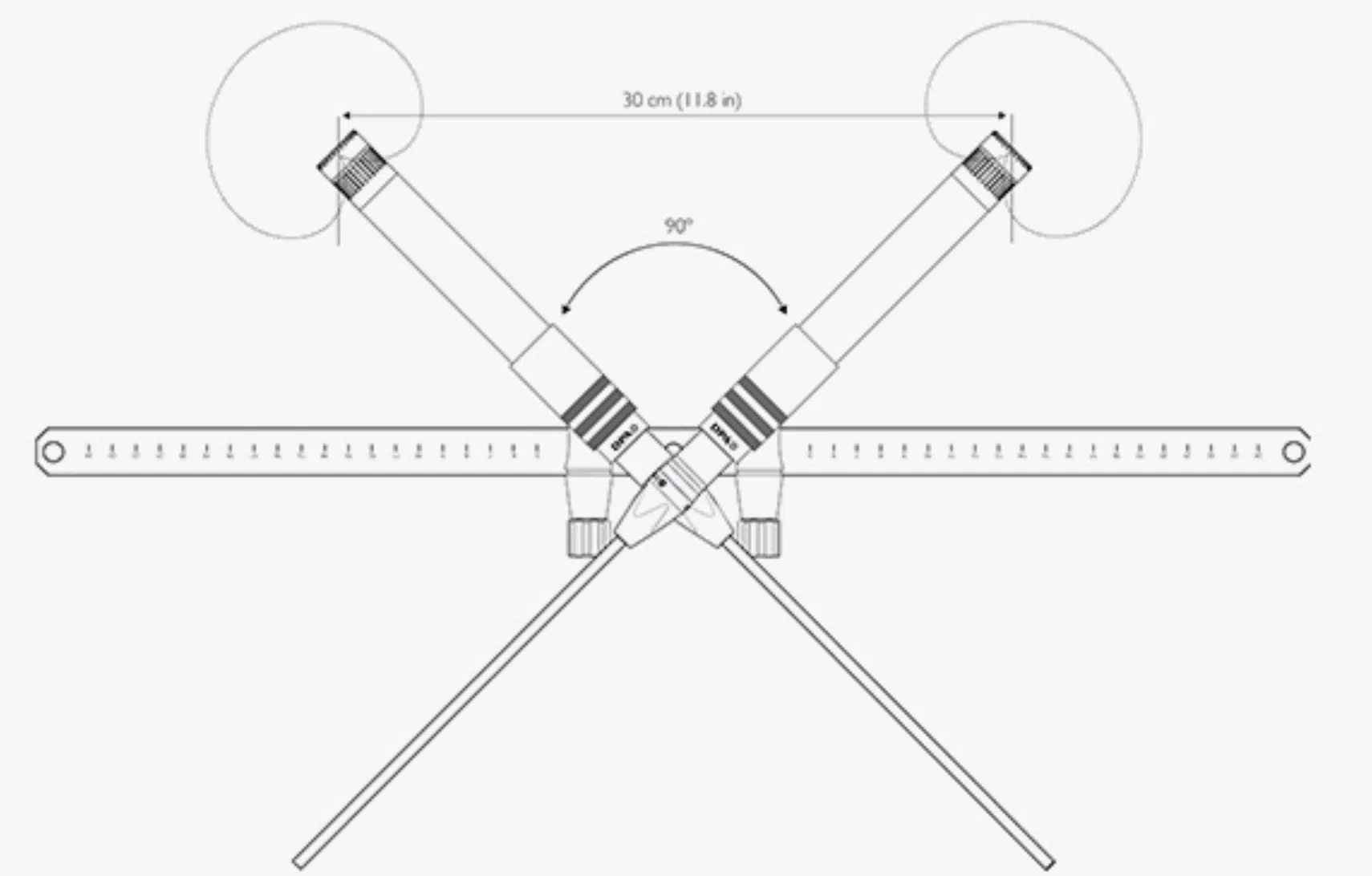
If phase inversion does not resolve the issue, or if you want to address phase cancellation during the recording stage, adjusting microphone placement is key.
Seriously, I cannot emphasize it enough… microphone placement is key.
Moving microphones closer or further away from the sound source, or altering their angle, can significantly impact the phase relationship between multiple signals.
For instance, ensuring that two microphones used to capture a stereo image of an acoustic guitar are at an equal distance from the sound source can help maintain phase coherence.
Experimentation and critical listening play essential roles in adjusting mic placement.
Sometimes, even slight adjustments in microphone placement can lead to significant improvements in sound quality by reducing phase cancellation.
You should take the time to experiment with microphone placement while closely monitoring the impact on the phase relationship between tracks.
This way, you’ll be able to capture that crisp, clear recordings.
Pro tip: When using two mics to capture a single sound source, position the first mic to capture the sound directly, and then adjust the second mic in different directions to explore the best stereo image and phase coherence.
-
Adjust The Timing
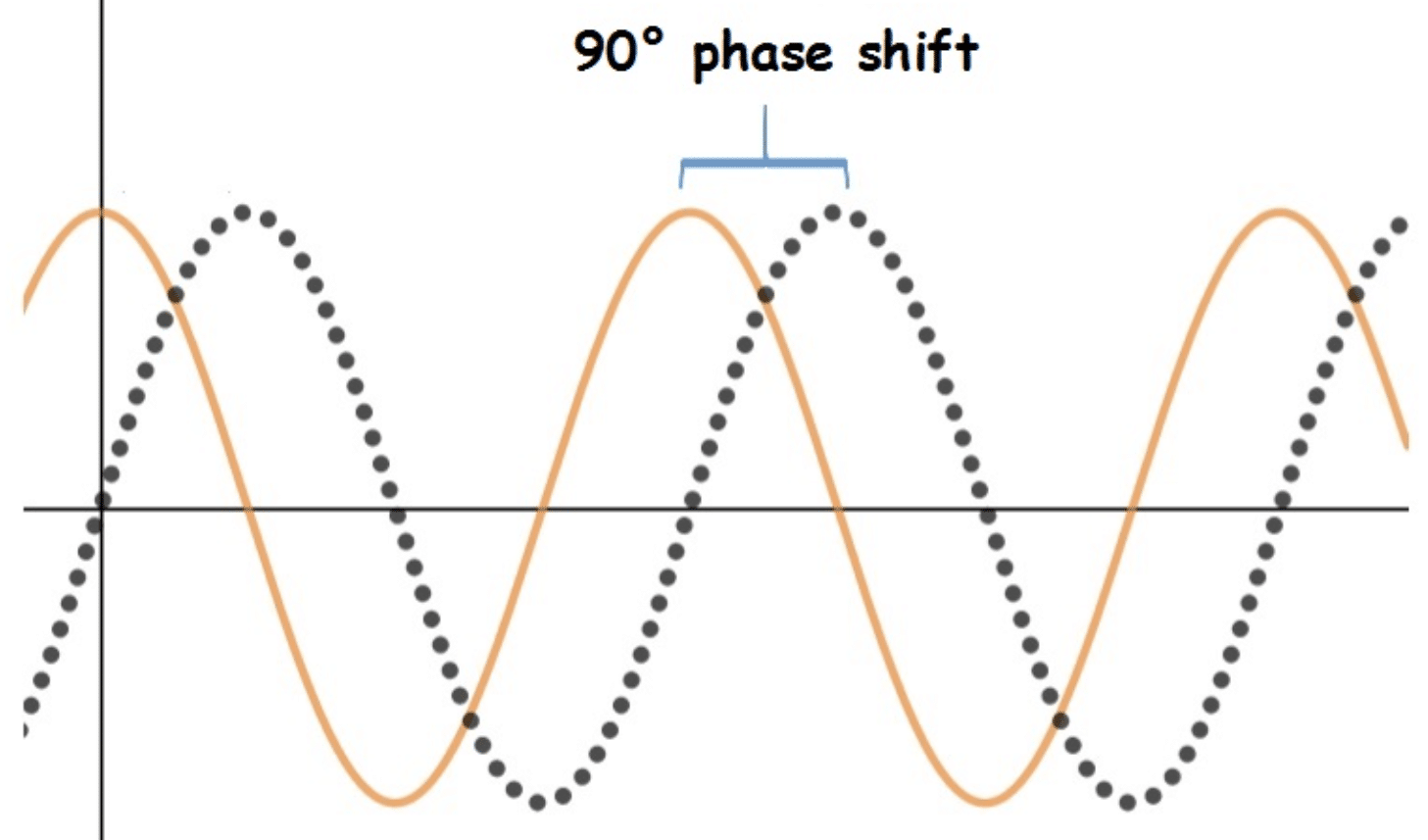
In some situations, slight timing differences between sound waves can lead to phase issues.
Introducing a small amount of delay to one of the signals can align the phases more closely, mitigating cancellation.
This technique is particularly useful in mixing when dealing with tracks recorded:
- At different times.
- With different mic placements.
Your DAW will help you get that precise control over delay 一 allowing you to adjust the timing in milliseconds or even samples.
By nudging a track forward or backward in time, they can achieve better phase alignment, improving the fusion and clarity of your mix.
-
The Role of EQ and Filtering
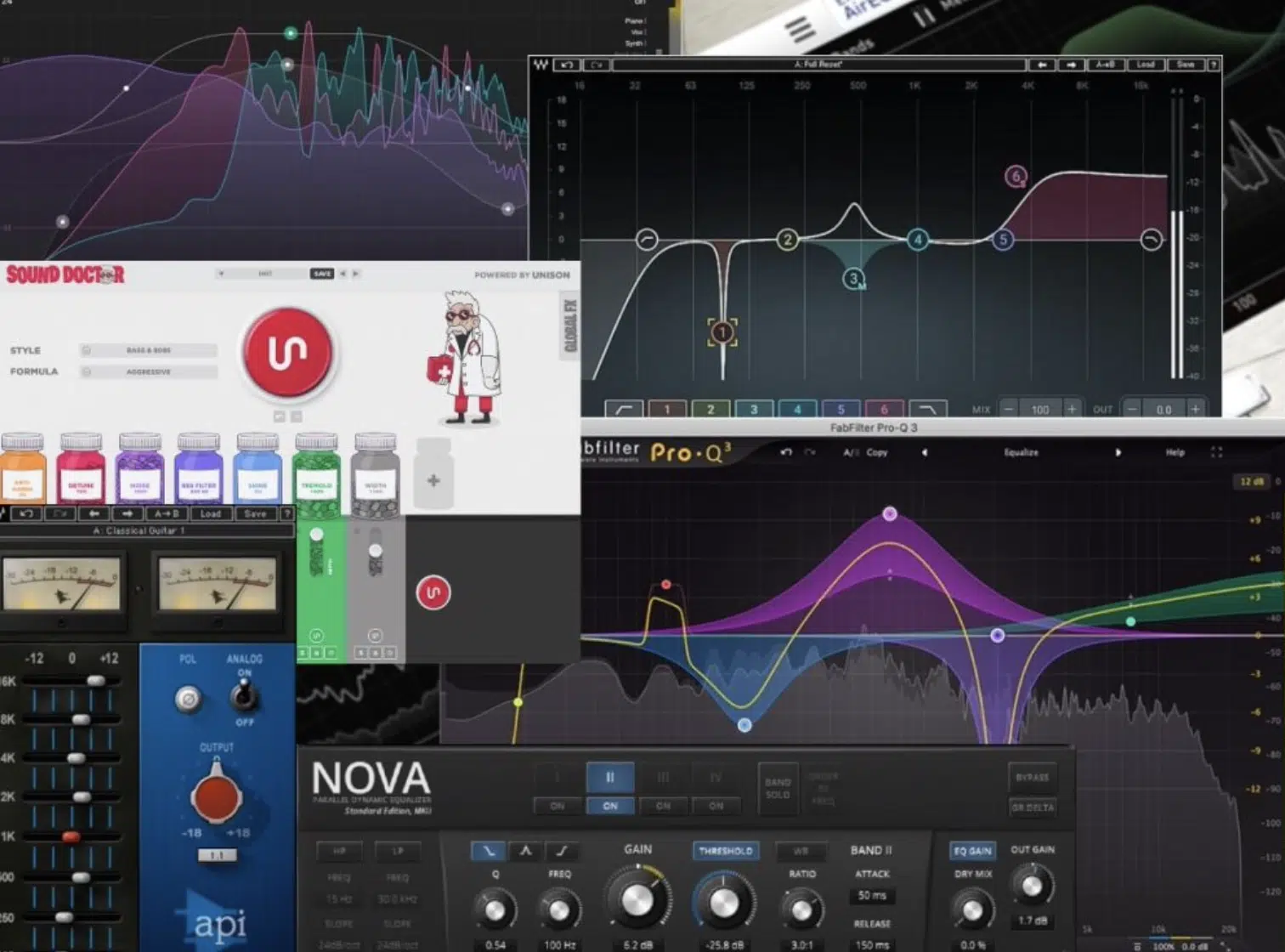
Equalization (EQ) and filtering can also play a role in managing phase cancellation, especially when it affects specific frequencies.
Using EQ to cut or boost certain frequencies can help reduce the impact of phase cancellation by minimizing the overlap between competing sounds.
For example, if two bass tracks are causing phase cancellation in the low end, applying a high-pass filter to one track can reduce the frequency overlap (ta-da!).
However, make sure to use EQ and filtering carefully… these instruments can also introduce their own phase shifts.
Therefore, it’s essential to listen carefully to the overall impact on the mix and make adjustments based on critical listening rather than solely on visual analysis 一 the difference is key.
If you want to avoid phase cancellation at the highest levels, you’ll need to incorporate techniques like these because it makes a world of difference.
What is Phase Cancellation: Final Thoughts
Phase is the invisible force behind the scenes that can completely undermine your mix if you don’t manage it carefully.
Thankfully, after reading this article, you can now identify, prevent, and correct phase cancellation issues like a professional.
This expertise will grant you the pristine sound quality that is essential for topping the charts.
To further solidify your understanding and skills, you need to check out these Free Project Files.
This exclusive pack contains 3 Free project files showcasing exactly how pro-quality tracks are made, detail by detail.
It features the most clear, pristine audio you can achieve (free of any phase cancellation issues, of course).
If you want to see phase cancellation, this pack is perfect for that too… you can simply take any track, duplicate it, and flip the phase.
It will help you deepen your knowledge and understanding of this crucial concept and its impact on audio/sound quality.
Knowing how to navigate phase cancellation is more than a technical skill; it’s a super important element in elevating your music to professional standards.
With the insights and techniques shared in this article, along with the hands-on learning from the Free Project Files pack, you’ll be able to produce tracks with unmatched clarity and depth.
Plus, you’ll never have to ask, “what is phase cancellation?” again.
Remember, mastering phase cancellation is not just about fixing problems; it’s about unlocking the full potential of your music.
Until next time…







Leave a Reply
You must belogged in to post a comment.